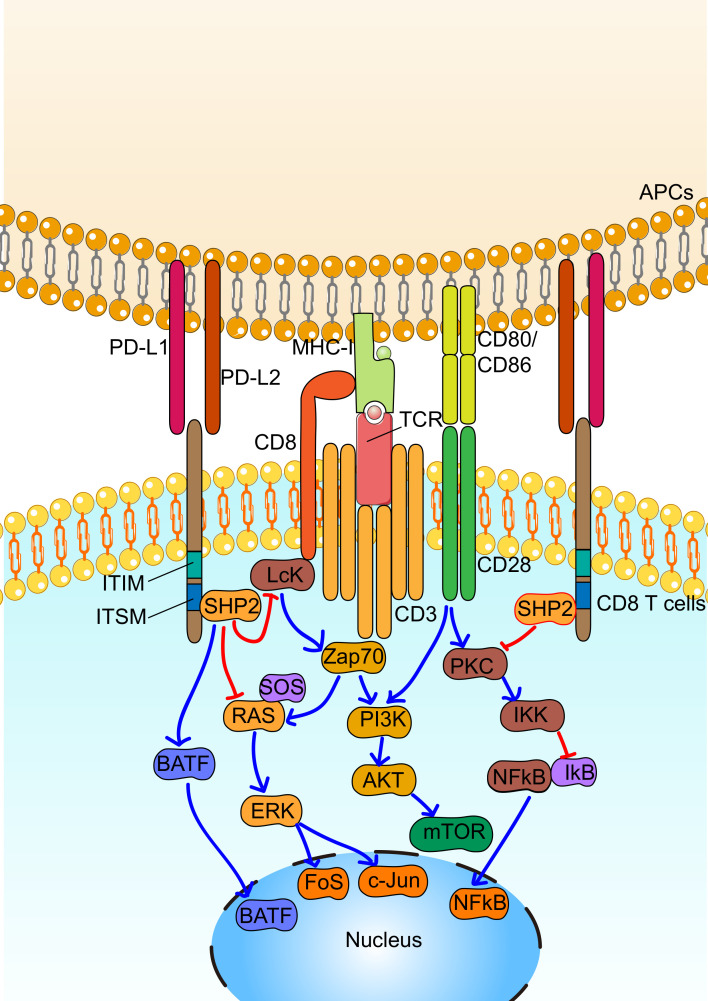Figure 1.
Canonical programmed cell death 1 (PD-1) signaling in CD8 T cells. By engagement with its ligands, including PD-L1 or PD-L2, PD-1 is phosphorylated at immunoreceptor tyrosine-based switch motif (ITSM) tyrosine residue sites, which leads to the binding of SHP2. Recruited SHP2 directly downregulate T cell receptor (TCR) signaling via dephosphorylation of proximal signaling elements, including PI3K, RAS and PKC, leading to decreased activation, proliferation, cytokine production and survival of CD8+ T cells. In addition, PD-1 signaling increases the expression of basic leucine zipper transcriptional factor ATF-like factor (BATF), which affects differentiation of immune cells. APC, antigen-presenting cell; ITIM, immunoreceptor tyrosine-based inhibitory motif.

